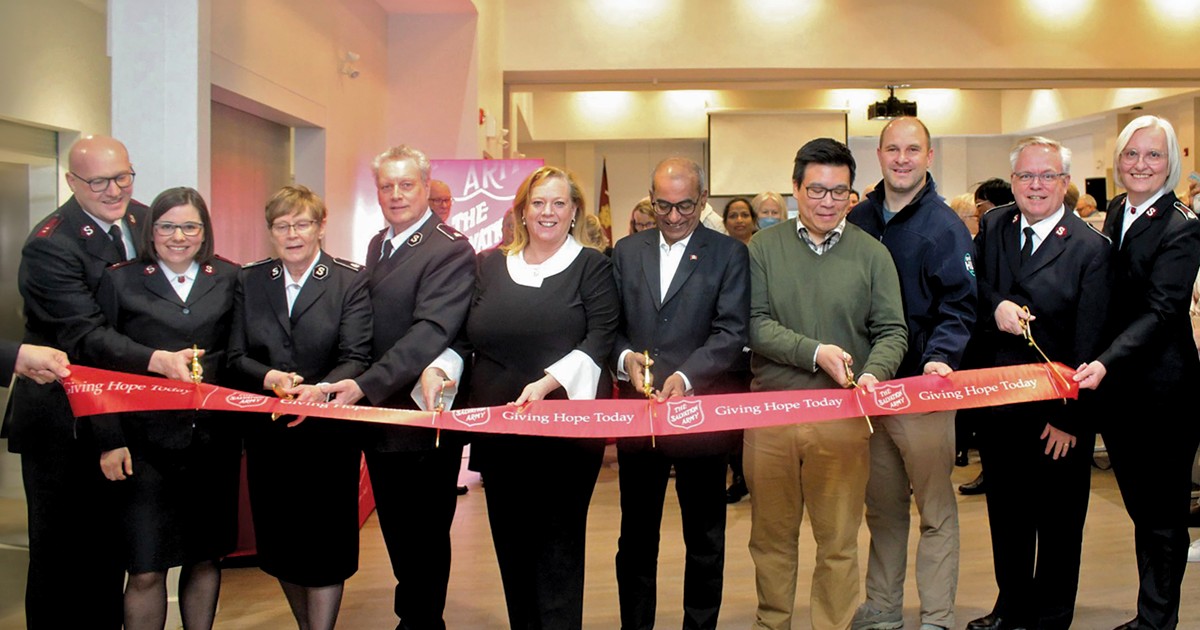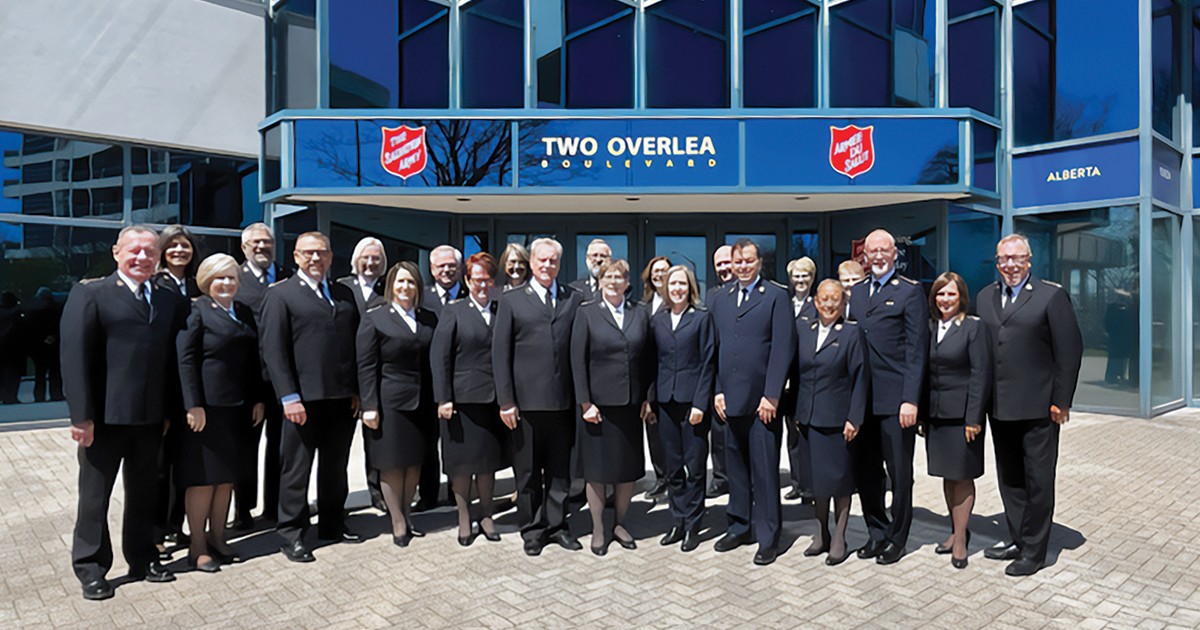Recently I drove past Concordia University in downtown Montreal on my way to a meeting. As I passed the Hall Building, I noticed it was ringed by police as they searched the building—a search, it turned out, prompted by a call that had threatened a terrorist attack on the university. My mind went back to 1969 when student radicals rioted and set fire to the university computer centre.
The 1960s was a tumultuous decade as so many values and standards were challenged. The church did not escape the fire of criticism during that period. Pierre Berton, a respected journalist and writer, published a book entitled The Comfortable Pew. He was commissioned by the Anglican Church to write the book, which turned out to be a withering critique of the church. Part of a wave of criticism during the turbulent 1960s when I was in university, it blasted the faults of the church:
In the intervening period, the church has changed. The Salvation Army corps I attend today in many ways does not resemble what it was in my university days. It has evolved, as has the church in its quest to become more missional and more directly involved in the community. And yet, the criticism of the church as insular and self-centred persists.
One evening I was talking to Howard Bridger, the territorial stewardship resources consultant. He was in Montreal working on a corps stewardship program and he asked if I had ever heard of the Halo Project. He described it briefly and my curiosity was piqued.
The Halo Project began when a group of academics at the University of Pennsylvania asked, “What is the economic impact of a church in its community?” They looked for the answer by studying 12 churches in the Philadelphia area, asking what it would cost a community to replace the services a church provides to that community—its “halo” effect. The Philadelphia study concluded that the 12 congregations contributed $51,850,178 to their communities.
A group of academics in Toronto brought the concept of the Halo Project to Canada with a study of 80 congregations in the Toronto area. That study also gave positive results. Churches are connected to their communities and offer services of great value. A church with 150 members and a budget of $150,000- $200,000 typically has an economic impact of over $1 million on that community. In other words, it would cost the neighbourhood over $1 million to replace the services the church offers. As the Toronto Halo report indicated, “local faith congregations are also economic engines contributing to the common good of all.”
This study highlights the value of integrated mission—responding to the total needs of the community around us. The Salvation Army has engaged the consultants to do three pilot projects: Toronto's Cedarbrae Community Church, Kelowna Community Church, B.C., and Montreal Citadel. In each case, the value of the corps and its services to the community was in excess of $1 million, with a range between $1.04 million and $5.6 million. There is a measurable case for faith doing good.
The study process explores a variety of broad questions including provision of open space, direct spending in the community, education programs, the ability to draw people into the area, individual impacts, community development, and social capital and care. It looks at every dimension of corps activity through a series of lenses:
When hundreds of people come through our doors, when our corps is present in community life, and when the values of the gospel are lived out and the invitation to know Jesus is incarnated in daily activity, we can have a remarkable impact on our neighbours. The Halo study helps us put a concrete value on the community's use of our buildings, the impact of our musical groups, how we assist children, the reach of our fellowship programs and the way in which people facing difficult situations are helped, and greater problems or disasters are prevented. It does so with hard numbers, which show our value to the community is extensive and redemptive.
Beyond that, it gives us analytical tools that are crucial to the health of our corps:
When Charles Wesley wrote in one of his hymns “A charge to keep I have, a God to glorify,” he was thinking in spiritual terms. But mission and economic and societal value do intersect. And Wesley expresses that in the third verse of his hymn where we pray: “Your servant, Lord prepare a strict account to give.” The Halo Project helps us do that.
Colonel Glen Shepherd is the divisional secretary for business administration in the Quebec Division.
Corps Halo Effect Per Capita
Montreal Citadel $1,040,047.52 $7,704.06
Cedarbrae Community Church $1,707,742.98 $21,346.79
Kelowna Community Church $5,619,467.02 $96,887.37
We have been trying to reach out to our community. When we measured what we are doing through the Halo Project, we realized we make a significant impact for good on those around us with the programs and services we offer.
—Colonel Eleanor Shepherd, corps officer, Montreal Citadel
These findings clearly challenge the assumption that communities of faith are merely self-serving clubs. They remind us that local congregations do not exist in isolation from the communities in which they find themselves.
—Dr. Michael Wood Daly, Halo Project Research Lead
The 1960s was a tumultuous decade as so many values and standards were challenged. The church did not escape the fire of criticism during that period. Pierre Berton, a respected journalist and writer, published a book entitled The Comfortable Pew. He was commissioned by the Anglican Church to write the book, which turned out to be a withering critique of the church. Part of a wave of criticism during the turbulent 1960s when I was in university, it blasted the faults of the church:
- boring preaching
- cultural irrelevance
- remote institutionalism
- out-of-touch leadership
- inward-looking remoteness from the community.
In the intervening period, the church has changed. The Salvation Army corps I attend today in many ways does not resemble what it was in my university days. It has evolved, as has the church in its quest to become more missional and more directly involved in the community. And yet, the criticism of the church as insular and self-centred persists.
One evening I was talking to Howard Bridger, the territorial stewardship resources consultant. He was in Montreal working on a corps stewardship program and he asked if I had ever heard of the Halo Project. He described it briefly and my curiosity was piqued.
The Halo Project began when a group of academics at the University of Pennsylvania asked, “What is the economic impact of a church in its community?” They looked for the answer by studying 12 churches in the Philadelphia area, asking what it would cost a community to replace the services a church provides to that community—its “halo” effect. The Philadelphia study concluded that the 12 congregations contributed $51,850,178 to their communities.
A group of academics in Toronto brought the concept of the Halo Project to Canada with a study of 80 congregations in the Toronto area. That study also gave positive results. Churches are connected to their communities and offer services of great value. A church with 150 members and a budget of $150,000- $200,000 typically has an economic impact of over $1 million on that community. In other words, it would cost the neighbourhood over $1 million to replace the services the church offers. As the Toronto Halo report indicated, “local faith congregations are also economic engines contributing to the common good of all.”
This study highlights the value of integrated mission—responding to the total needs of the community around us. The Salvation Army has engaged the consultants to do three pilot projects: Toronto's Cedarbrae Community Church, Kelowna Community Church, B.C., and Montreal Citadel. In each case, the value of the corps and its services to the community was in excess of $1 million, with a range between $1.04 million and $5.6 million. There is a measurable case for faith doing good.
The study process explores a variety of broad questions including provision of open space, direct spending in the community, education programs, the ability to draw people into the area, individual impacts, community development, and social capital and care. It looks at every dimension of corps activity through a series of lenses:
- What is the activity and what does it offer?
- How many people from outside the worshipping community does it touch?
- How does it operate? How is it staffed?
- What are the costs of hired staff?
- What is the measurable value of volunteer hours given by corps members?
- How much of the corps building does it use?
When hundreds of people come through our doors, when our corps is present in community life, and when the values of the gospel are lived out and the invitation to know Jesus is incarnated in daily activity, we can have a remarkable impact on our neighbours. The Halo study helps us put a concrete value on the community's use of our buildings, the impact of our musical groups, how we assist children, the reach of our fellowship programs and the way in which people facing difficult situations are helped, and greater problems or disasters are prevented. It does so with hard numbers, which show our value to the community is extensive and redemptive.
Beyond that, it gives us analytical tools that are crucial to the health of our corps:
- When people say we are remote from the community, we can answer to the contrary with concrete evidence developed by external consultants;
- As we measure the economic value of our reach into the community, it is easier to speak to potential donors and funders about how their support of the corps will benefit the entire community, not just the people who attend on Sunday morning;
- As we work to develop a more integrated mission profile for our corps, its gives us a hard metric framework to assess and measure what we do. By extension, it makes it possible for us to track how we are progressing. Just as we measure the changes in membership and attendance, we can now measure the changes in the value of the impact we are having on the community around us.
When Charles Wesley wrote in one of his hymns “A charge to keep I have, a God to glorify,” he was thinking in spiritual terms. But mission and economic and societal value do intersect. And Wesley expresses that in the third verse of his hymn where we pray: “Your servant, Lord prepare a strict account to give.” The Halo Project helps us do that.
Colonel Glen Shepherd is the divisional secretary for business administration in the Quebec Division.
Halo Project: The Bottom Line
Corps Halo Effect Per Capita
Montreal Citadel $1,040,047.52 $7,704.06
Cedarbrae Community Church $1,707,742.98 $21,346.79
Kelowna Community Church $5,619,467.02 $96,887.37
What people are saying about the Halo Project:
We have been trying to reach out to our community. When we measured what we are doing through the Halo Project, we realized we make a significant impact for good on those around us with the programs and services we offer.
—Colonel Eleanor Shepherd, corps officer, Montreal Citadel
These findings clearly challenge the assumption that communities of faith are merely self-serving clubs. They remind us that local congregations do not exist in isolation from the communities in which they find themselves.
—Dr. Michael Wood Daly, Halo Project Research Lead










Several years ago, att Ottawa Citadel, my husband and I were asked to initiate a ministry to new canadians. Our corps is located in an area where the demographics would indicate a need for such a program. This project has changed the face of the congregation of OC considerably in a way true to our mission and purpose as TSA.
The halo project is an interesting tool for evaluating that connection between corps and community, which corps should be accountable to maintain. Thanks Glen for this article which explains the halo project. Hopefully it will be implemented as an assessment tool in more corps in this territory.